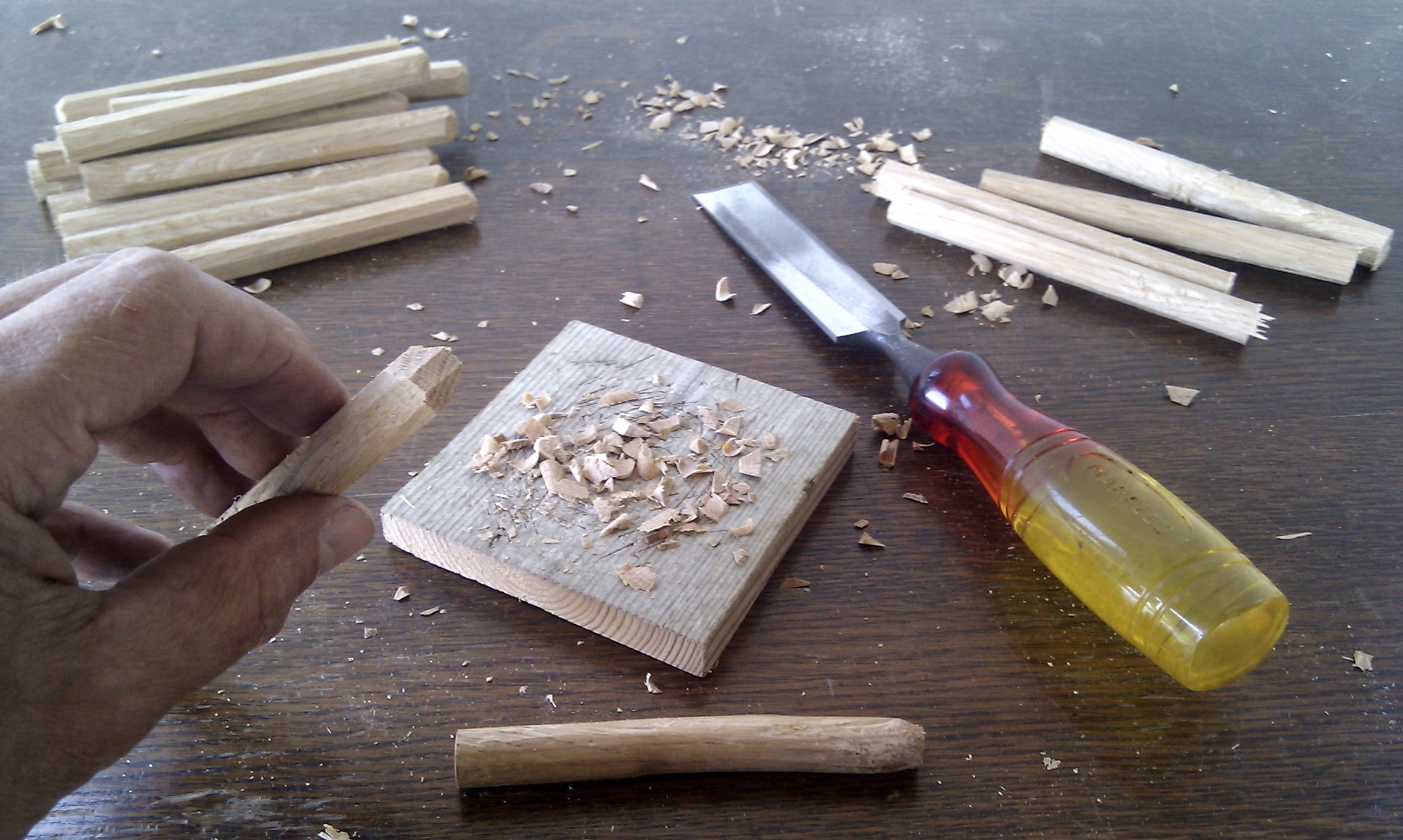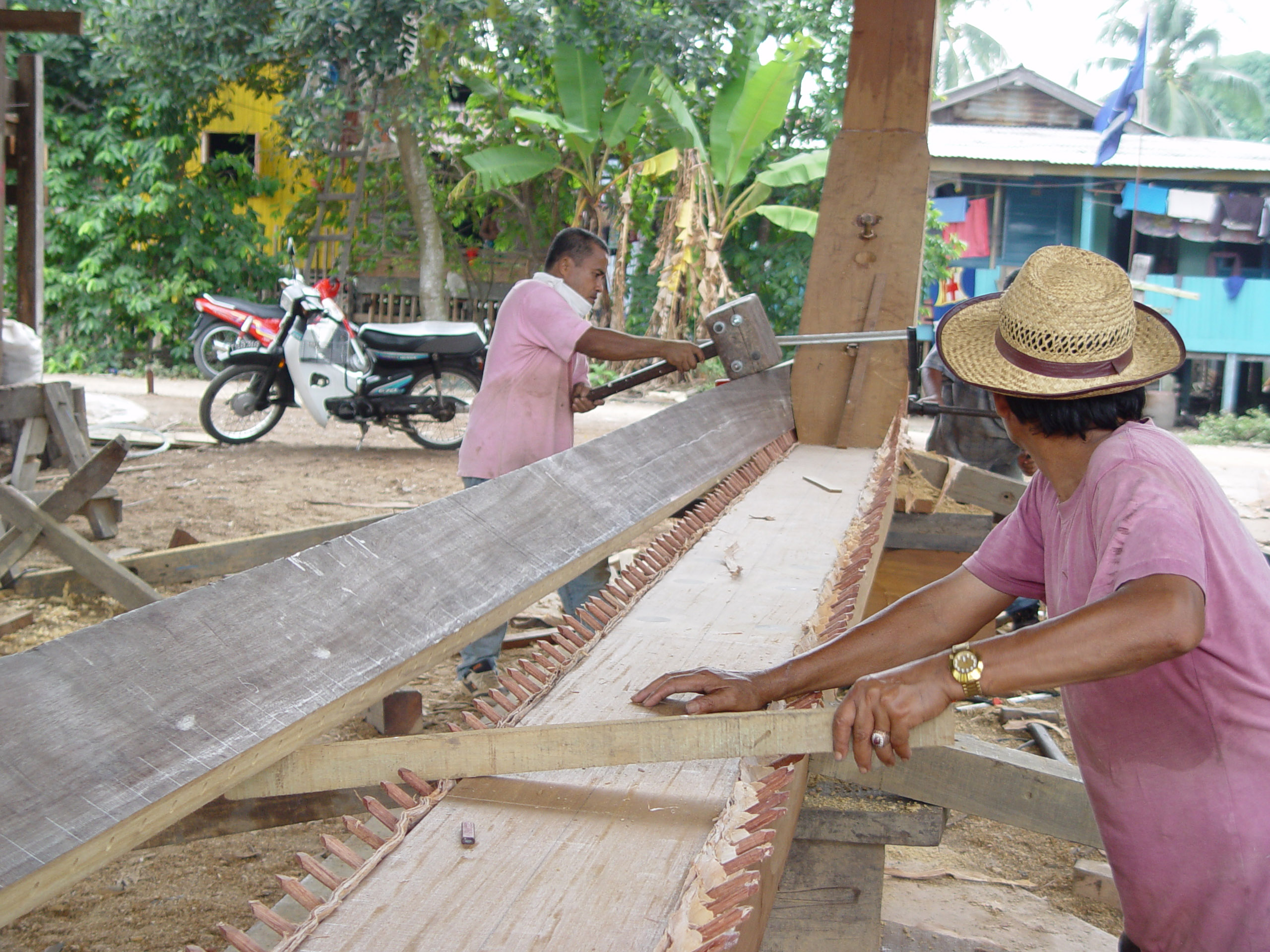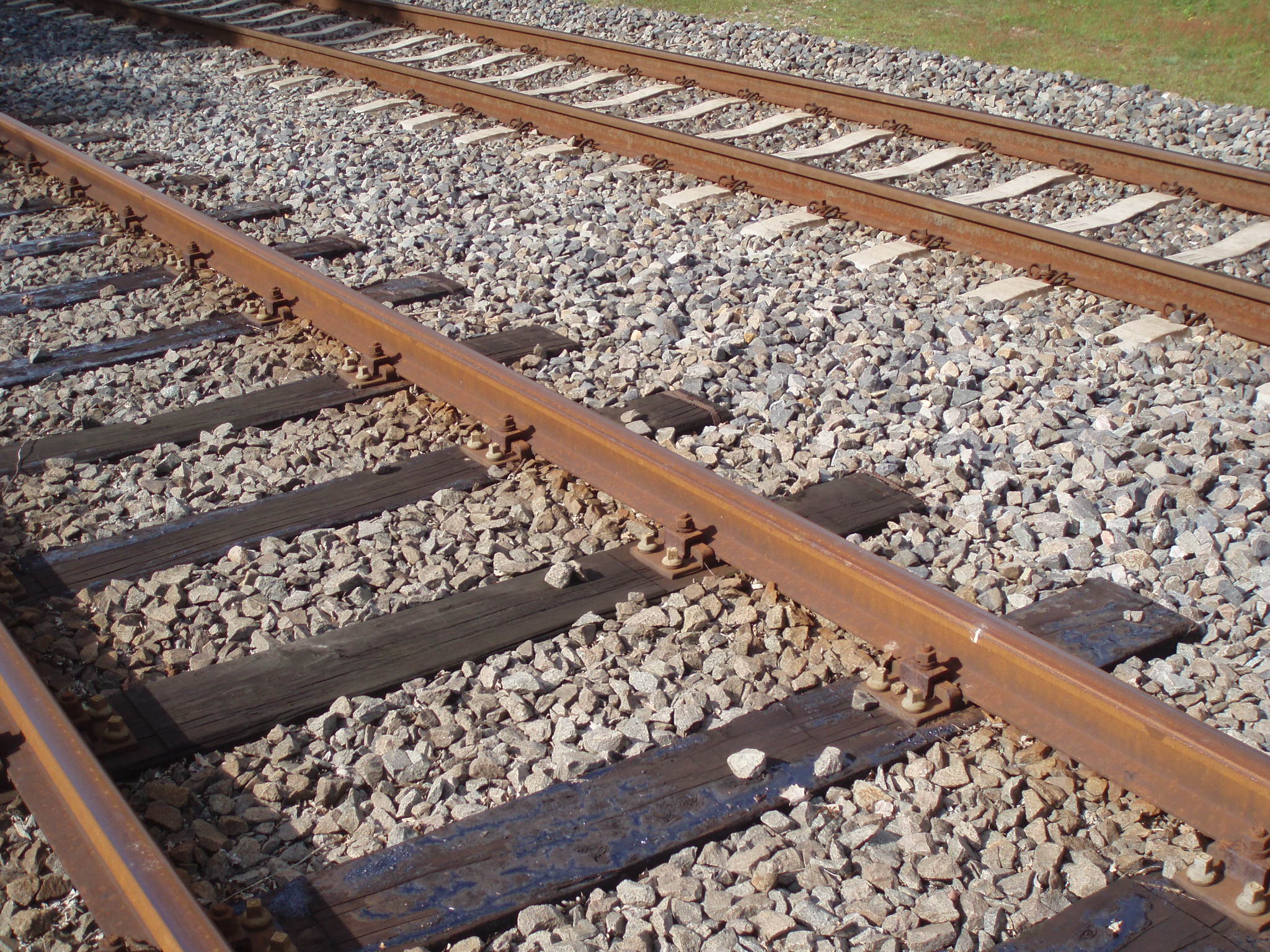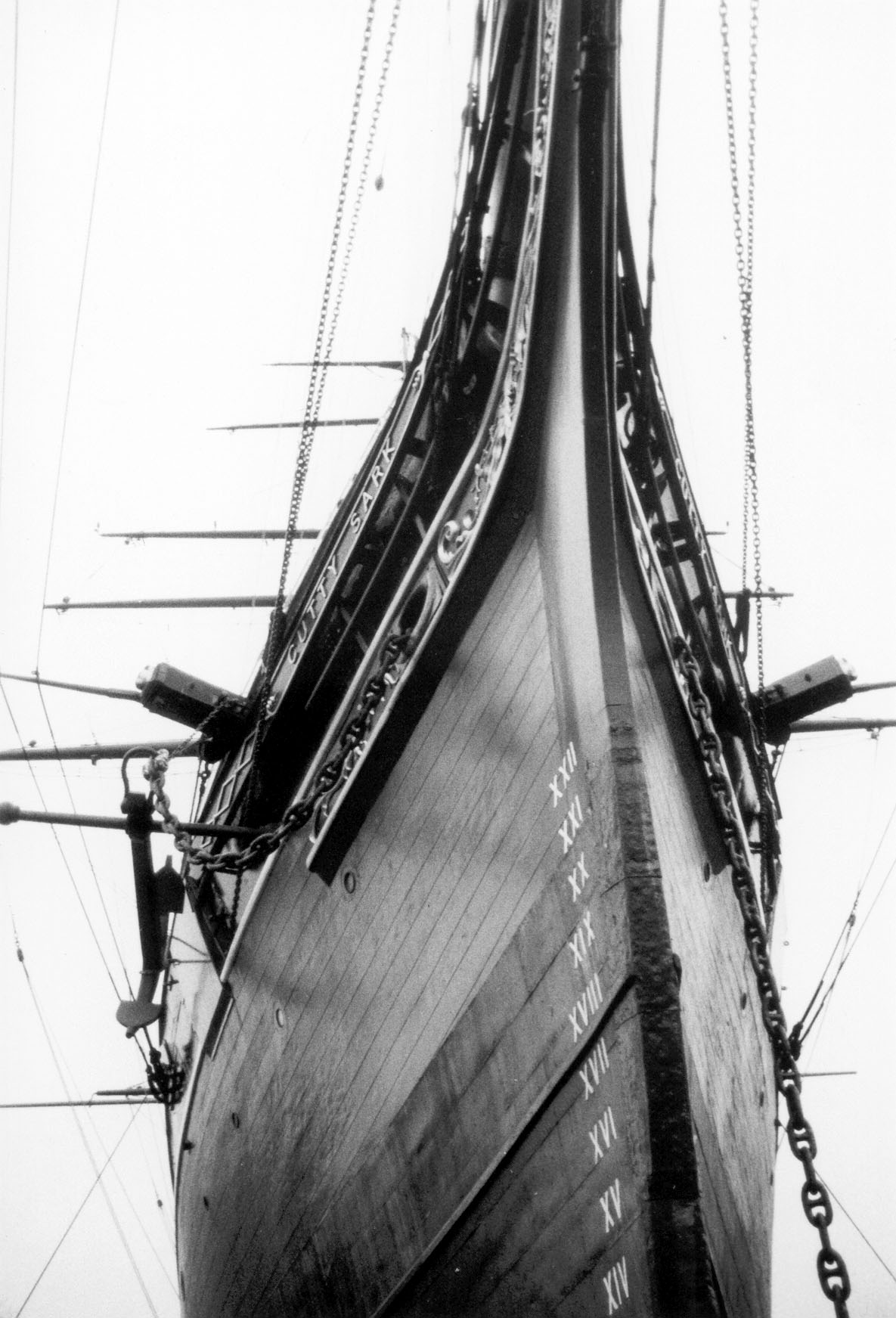|
Trenails
A treenail, also trenail, trennel, or trunnel, is a wooden peg, pin, or dowel used to fasten pieces of wood together, especially in timber frames, covered bridges, wooden shipbuilding and boat building. It is driven into a hole bored through two (or more) pieces of structural wood (mortise and tenon). History and general use The use of wood as a tenon can be traced back over 7,000 years, as archaeologist have found traces of wood nails in the excavation of early Germanic sites. Treenails are extremely economical and readily available, making them a common early building material. Black Locust, Black locust is a favorite wood when making treenails in shipbuilding in North America and English Oak, English oak in Europe due to their strength and rot resistance, while red oak is typical in buildings. Traditionally treenails and pegs were made by splitting bolts of wood with a froe and shaping them with a drawknife on a shaving horse. They can also be made with a tine-former, a hollo ... [...More Info...] [...Related Items...] OR: [Wikipedia] [Google] [Baidu] |
Boat Building
Boat building is the design and construction of boats (instead of the larger ships) — and their on-board systems. This includes at minimum the construction of a hull, with any necessary propulsion, mechanical, navigation, safety and other service systems as the craft requires. The boat building industry provides for the design, manufacturing, repair and modification of human-powered watercrafts, sailboats, motorboats, airboats and submersibles, and caters for various demands from recreational (e.g. launches, dinghies and yachts), commercial (e.g. tour boats, ferry boats and lighters), residential ( houseboats), to professional (e.g. fishing boats, tugboats, lifeboats and patrol boats). Construction materials and methods Wood Wood is the traditional boat building material used for hull and spar construction. It is buoyant, widely available and easily worked. It is a popular material for small boats (of e.g. length; such as dinghies and sailboats). Its abras ... [...More Info...] [...Related Items...] OR: [Wikipedia] [Google] [Baidu] |
Trenails
A treenail, also trenail, trennel, or trunnel, is a wooden peg, pin, or dowel used to fasten pieces of wood together, especially in timber frames, covered bridges, wooden shipbuilding and boat building. It is driven into a hole bored through two (or more) pieces of structural wood (mortise and tenon). History and general use The use of wood as a tenon can be traced back over 7,000 years, as archaeologist have found traces of wood nails in the excavation of early Germanic sites. Treenails are extremely economical and readily available, making them a common early building material. Black Locust, Black locust is a favorite wood when making treenails in shipbuilding in North America and English Oak, English oak in Europe due to their strength and rot resistance, while red oak is typical in buildings. Traditionally treenails and pegs were made by splitting bolts of wood with a froe and shaping them with a drawknife on a shaving horse. They can also be made with a tine-former, a hollo ... [...More Info...] [...Related Items...] OR: [Wikipedia] [Google] [Baidu] |
Sharpening Trenails
Sharpening is the process of creating or refining a blade, the edge joining two non-coplanar faces into a converging apex, thereby creating an edge of appropriate shape on a tool or implement designed for cutting. Improving sharpness is done by removing material on an implement with an abrasive substance harder than the material of the implement, followed sometimes by processes to polish/hone the sharp surface to increase smoothness. Tools and materials There are many ways of sharpening tools. Malleable metal surfaces such as bronze, iron and mild steel may be formed by beating or peening a flat surface into a sharp edge. This process also causes work hardening. An abrasive material may be rubbed against the cutting edge to be sharpened. The most traditional abrasive material is a natural stone such as sandstone or granite. Modern synthetic grinding wheels and flat sharpening stones can be manufactured in precise grades of abrasiveness according to the intended process. A sh ... [...More Info...] [...Related Items...] OR: [Wikipedia] [Google] [Baidu] |
Woodworking
Woodworking is the skill of making items from wood, and includes cabinetry, furniture making, wood carving, joinery, carpentry, and woodturning. History Along with stone, clay and animal parts, wood was one of the first materials worked by early humans. Microwear analysis of the Mousterian stone tools used by the Neanderthals show that many were used to work wood. The development of civilization was closely tied to the development of increasingly greater degrees of skill in working these materials. Among the earlliest finds of woodworking are shaped sticks displaying notches from Kalambo Falls in southen Africa, dating to around 476,000 years ago. The Clacton spearhead from Clacton-on-Sea, England, dating to around 400,000 years ago,Allington-Jones, L., (2015) ''Archaeological Journal'', 172 (2) 273–296 The Clacton Spear – The Last One Hundred Years the Schöningen spears, from Schöningen (Germany) dating around 300,000 years ago and the Lehringen spear from no ... [...More Info...] [...Related Items...] OR: [Wikipedia] [Google] [Baidu] |
Victorian Times
In the history of the United Kingdom and the British Empire, the Victorian era was the reign of Queen Victoria, from 20 June 1837 until her death on 22 January 1901. Slightly different definitions are sometimes used. The era followed the Georgian era and preceded the Edwardian era, and its later half overlaps with the first part of the ''Belle Époque'' era of continental Europe. Various liberalising political reforms took place in the UK, including expanding the electoral franchise. The Great Famine caused mass death in Ireland early in the period. The British Empire had relatively peaceful relations with the other great powers. It participated in various military conflicts mainly against minor powers. The British Empire expanded during this period and was the predominant power in the world. Victorian society valued a high standard of personal conduct across all sections of society. The emphasis on morality gave impetus to social reform but also placed restrictions o ... [...More Info...] [...Related Items...] OR: [Wikipedia] [Google] [Baidu] |
Railroad Ties
A railroad tie, crosstie (American English), railway tie (Canadian English) or railway sleeper (Australian and British English) is a rectangular support for the rails in railroad tracks. Generally laid perpendicular to the rails, ties transfer loads to the track ballast and subgrade, hold the rails upright and keep them spaced to the correct gauge. Railroad ties are traditionally made of wood, but prestressed concrete is now also widely used, especially in Europe and Asia. Steel ties are common on secondary lines in the UK; plastic composite ties are also employed, although far less than wood or concrete. As of January 2008, the approximate market share in North America for traditional and wood ties was 91.5%, the remainder being concrete, steel, azobé (red ironwood) and plastic composite. Tie spacing may depend on the type of tie, traffic loads and other requirements, for example on North American mainline railroads to on London, Midland and Scottish Railway jointed tr ... [...More Info...] [...Related Items...] OR: [Wikipedia] [Google] [Baidu] |
Railroad
Rail transport (also known as train transport) is a means of transport using wheeled vehicles running in railway track, tracks, which usually consist of two parallel steel railway track, rails. Rail transport is one of the two primary means of land transport, next to road transport. It is used for about 8% of passenger and rail freight transport, freight transport globally, thanks to its Energy efficiency in transport, energy efficiency and potentially high-speed rail, high speed.Rolling stock on rails generally encounters lower friction, frictional resistance than rubber-tyred road vehicles, allowing rail cars to be coupled into longer trains. Power is usually provided by Diesel locomotive, diesel or Electric locomotive, electric locomotives. While railway transport is capital intensity, capital-intensive and less flexible than road transport, it can carry heavy loads of passengers and cargo with greater energy efficiency and safety. Precursors of railways driven by human or an ... [...More Info...] [...Related Items...] OR: [Wikipedia] [Google] [Baidu] |
Rail Fastening System
A rail fastening system is a means of fixing Rail profile, rails to railroad ties (North America) or sleepers (British Isles, Australasia, and Africa). The terms ''rail anchors'', ''tie plates'', ''chairs'' and ''track fasteners'' are used to refer to parts or all of a rail fastening system. The components of a rail fastening system may also be known collectively as other track material, or OTM for short. Various types of fastening have been used over the years. History and overview The earliest wooden rails were fixed to wooden sleepers by pegs through holes in the rail, or by nails. By the 18th century, cast iron rails had come into use, and also had holes in the rail itself to allow them to be fixed to a support. 18th century developments such as the flanged rail and fish bellied rail also had holes in the rail itself; when stone block sleepers were used the nails were driven into a wooden block which had been inserted into a recess in the block. The first chair for a rail is ... [...More Info...] [...Related Items...] OR: [Wikipedia] [Google] [Baidu] |
Muntz Metal
Muntz metal (also known as yellow metal) is an alpha-beta brass alloy composed of approximately 60% copper, 40% zinc and a trace of iron. It is named after George Fredrick Muntz, a metal-roller of Birmingham, England, who commercialised the alloy following his patent of 1832. The alloy must be worked hot and is used today for corrosion-resistant machine parts. Alpha-beta (also called duplex) metals contain both the α and β phases. The α phase refers to a crystal structure that is face-centered cubic, while the β phase is body-centered cubic. Its original application was as a replacement for copper sheathing on the bottom of boats, as it maintained the anti-fouling abilities of the pure copper at around two thirds of the price. It became the material of choice for this application and Muntz made his fortune. It was found that copper prevented any organism that attempted to attach itself to a hull sheathed in the metal. Thus, it was also used to sheathe the piles of piers ... [...More Info...] [...Related Items...] OR: [Wikipedia] [Google] [Baidu] |
Plank (wood)
A plank is timber that is flat, elongated, and rectangular with parallel faces that are higher and longer than wide. Used primarily in carpentry, planks are critical in the construction of ships, houses, bridges, and many other structures. Planks also serve as supports to form shelves and tables. Usually made from timber, sawed so that the grain runs along the length, planks are usually more than thick, and are generally wider than . Planks are often used as a work surface on elevated scaffolding, and need to be thick enough to provide strength without breaking when walked on. In the United States, planks can be any length and are generally a minimum of 2×8 (), but planks that are 2×10 () and 2×12 () are more commonly stocked by lumber retailers. Timber is categorized as a board if its width is less than , and its thickness is less than . In Germany, the national norm (DIN 68252) stipulates that the thickness of a plank (termed ''Bohle)'' must be 40 mm minimum. A p ... [...More Info...] [...Related Items...] OR: [Wikipedia] [Google] [Baidu] |
Building The Naga Pelangi - Fitting The First Plank
A building or edifice is an enclosed structure with a roof, walls and windows, usually standing permanently in one place, such as a house or factory. Buildings come in a variety of sizes, shapes, and functions, and have been adapted throughout history for numerous factors, from building materials available, to weather conditions, land prices, ground conditions, specific uses, prestige, and aesthetic reasons. To better understand the concept, see ''Nonbuilding structure'' for contrast. Buildings serve several societal needs – occupancy, primarily as shelter from weather, security, living space, privacy, to store belongings, and to comfortably live and work. A building as a shelter represents a physical separation of the human habitat (a place of comfort and safety) from the ''outside'' (a place that may be harsh and harmful at times). buildings have been objects or canvasses of much artistic expression. In recent years, interest in sustainable planning and building practi ... [...More Info...] [...Related Items...] OR: [Wikipedia] [Google] [Baidu] |










